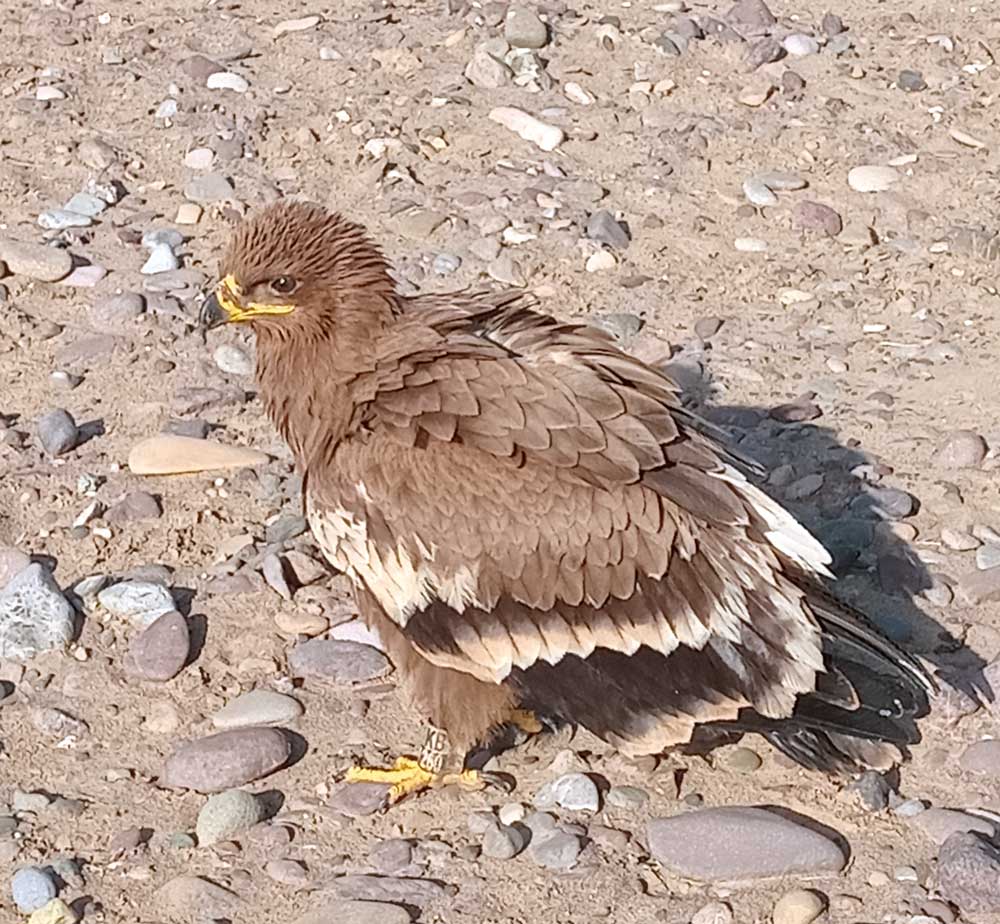Carrying out a planned walk-through and pre-winter scientific field activities and at the same time taking a stock of biodiversity, a group of nature conservation inspectors noticed a steppe eagle sitting on a two-metre elevation. Two steppe kestrels circled above him, this is how they usually protect their hunting territory. Suddenly the predator tilted and fell on its back, it became clear that something was wrong with him. Environmentalists began to approach the bird with caution, but there was no reaction on its part.
Judging by its exhausted state, it became clear that the eagle had lost all strength during the flight, it was weak and hungry, so it was not difficult to catch it. We delivered the bird to the central estate of the reserve, a veterinarian examined and treated it, and the staff fed the feathered predator and at the same time recorded its measurements. It was an adult: the wing length was 51 cm, the body was 63 cm long, the tail was 24 cm, and the beak was 4 cm. The steppe eagle belongs to the order Falconiformes and the family of Accipitridae; he is a rare species listed in the Red Data Book of Turkmenistan. On the territory of the Badhyz State Reserve, it is registered as a wintering bird, which arrives in late September-early October and is found mainly in the steppe part of the Reserve’s territory. These birds fly back in the second half of March; their nesting in our territory has not been proven, although some individuals stay all year round. Eagles feed exclusively on rodents, reptiles and small birds.

